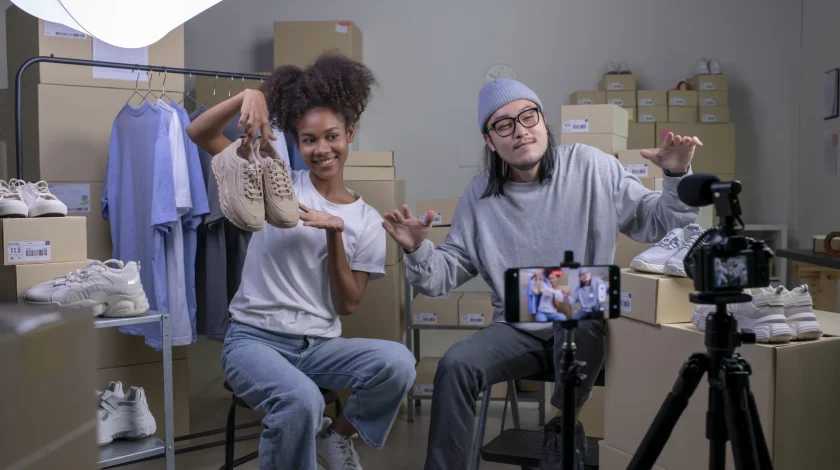Along with those popular users who have morphed into what are now commonly referred to as ‘influencers’, social media has undoubtedly changed the current course of advertising. More and more companies are now scouting for Instagram users with significant numbers of followers, and paying them to advertise their products and/or services.
Whilst influencers are able to effectively reach niche markets, recent events have left a bad taste in the mouths of many followers. This has in turn forced brands to reconsider whether utilising ‘influencers’ is the most authentic, or even the most effective way to reach potential customers within their key demographics.
The LA mural controversy, a publicity stunt!
Los Angeles is a city of Hollywood, fame and perfect Instagram shots. Visitors are known to flock to the world famous murals, which provide the opportunity to snap those sought after ‘Insta worthy’ pictures.
However, one particular mural recently sparked global outrage across social media, as visitors and locals were shocked to find the ‘City of Angels’ mural on Melrose Avenue covered and guarded by security.
Accompanying this locked-down mural was a sign reading: “PRIVATE MURAL FOR VERIFIED INFLUENCERS AND PEOPLE WITH OVER 20,000 FOLLOWERS ONLY”.
It was later confirmed that the mural restriction was a marketing stunt pulled off by musician and popular Youtuber Dillon Francis in order to help promote his new ‘Like and Subscribe’ series, which focused on influencer culture. Whilst this particular incident turned out to be nothing more than a publicity stunt, it did raise some serious questions surrounding the various perks that influencers often enjoy, as well as whether their followers are starting to lose both faith and interest in them.
Influencer culture
Whilst the use of influencers in advertising can be viewed as a more authentic alternative to those avenues which companies have traditionally taken, many social media users have become frustrated with their feeds being littered with constant subtle advertising, and feel as though influencers have lost touch. This has notably been confirmed by a number of different luxury resorts and hotels.
As an example, The Charleville Lodge in Dublin has now banned bloggers and social media influencers from receiving free accommodation, following Youtuber Elle Darby’s request for a free five-night stay in their hotel in return for ‘exposure’.
The Lodge’s very public response took shots at the influencer’s entitled nature:
Fake Followers
Not only are social media users starting to grow tired of influencer antics, businesses are struggling to find legitimate influencers to utilise in their advertising campaigns. Adding to this corporate frustration is the fact that there has been a wave of influencers purchasing followers in order to appear more desirable to businesses looking to advertise. This is obviously extremely misleading, as it means that businesses could potentially be paying thousands of dollars in order to reach an audience that does not even exist.
A good way to ascertain the legitimacy of an influencer’s following is by scrolling through and looking at some of the follower accounts to get a sense of whether you would consider them typical for that type of influencer, and whether there is a constant stream of legitimate follower interactions on their posts. If an ‘influencer’ has hundreds of thousands of followers, but the amount of ‘likes’ that they have on their pictures, videos and/or posts are significantly less than the average user with the same number of followers, something dodgy may be afoot.
What does this all mean?
In conducting their recent AdTrust survey, NewsMediaWorks found that ‘on every dimension, consumers trust ads in newspapers over ads in social media’. This is due to the fact that traditional advertising (i.e. TV, radio and print) is now often viewed as more legitimate, particularly in the new age of fake news and other privacy scandals. This has led to businesses starting to think about reverting back to traditional advertising.
Is social media still worth the effort?
Whilst social media users have indeed started expressing a certain level of mistrust in social media due to ongoing and widely publicised incidents (e.g. privacy scandals and ‘fake news’), when used efficiently, social media is still a useful way to reach a wide range of potential customers. For instance, promoting content across social media is still an effective way for brands to reach a wide range of current and potential customers.
However, it is important that brands ensure that they take extra precautions if they do choose to go down the influencer route. This will generally mean checking on a number of things, such as whether the influencer’s image is truly authentic, whether they can represent the brand well, whether their following is made up of legitimate consumers and whether they have a high rate of positive engagement on their posts. If these steps are taken, and companies choose the most appropriate influencer(s), it is possible to ensure that your brand reaches your target audience.
It is also important for businesses to go with influencers who have the proven ability to hold up their end of the deal. In my May blog, I gave an example of an influencer post going wrong, when Scott Disick was called out by his Instagram followers for accidentally posting the entirety of the advertising copy that he was given, rather than the small section of text that he was supposed to post.
Whilst this might be considered authentic in that the influencer made it public that he had been recruited to promote the product in question, the authenticity that the company would have been aiming for would have ideally surrounded the fact that the influencer was the type of person to use the product being advertised without requiring a financial motivation. This type of authenticity is what influencers rely on in order to receive advertising jobs.
What other social media techniques can businesses incorporate in their advertising?
A new trend in social media advertising relates to brands reposting product-focussed photos taken by their customers. Two brands that have already utilised this tactic are Vans and Adidas. Vans, a longstanding footwear company, has taken the step to use more authentic looking photos on their Instagram page, and have done so by utilising their customers’ posts. This has meant that real customers are representing the Vans brand, which has resulted in a high rate of engagement across those particular posts.
The motivation for customers providing their own content is potentially twofold. As is seen in the image below, Vans has attributed the photograph to the photographer, which would undoubtedly result in an influx of new followers for that customer, as even if just one in every thousand users who ‘liked’ the post decided to follow the photographer, they would have gained 222 new followers. Secondly, even if the customer was unfazed by the lure of new followers, having their content published on such a popular account would allow for good old-fashioned bragging rights.
Adidas has taken this method a step further, by utilising customer photographs throughout their shopping app. This means that prior to making a purchase, customers are able to get a feel for what the product looks like on other regular customers, as opposed to models. Adidas similarly link the chosen images back to customer Instagram accounts, allowing for the content creators to see the interaction as a fair trade.
What is the main takeaway?
Whilst social media continues to go through waves of popularity with users, one golden rule for all commercial businesses to keep in mind when advertising is to simply ‘stay authentic‘, with this ringing particularly true in the context of utilising influencers.
Our recommendation is to periodically repost your customers’ social media posts when they promote your products or services in a positive light (with their permission, if possible!). This will hopefully result in your current customers having a genuine sense of engagement with the brand, and in turn advertises those products to potential customers in a truly authentic way.
If you feel that utilising social media influencers in your company’s next advertising campaign may be the way to go, Coleman Greig urges you to conduct careful research prior to making any major financial decisions. If you have questions regarding a current contract between your company and a social media influencer, please feel free to get in touch with our Commercial Advice team.
If you would like to receive our regular legal updates, please subscribe here. Alternatively, if you would like to speak with one of the lawyers in Coleman Greig’s Brand Protection team, please don’t hesitate to get in touch with us on 02 9895 9230, or via info@colemangreig.com.au.













